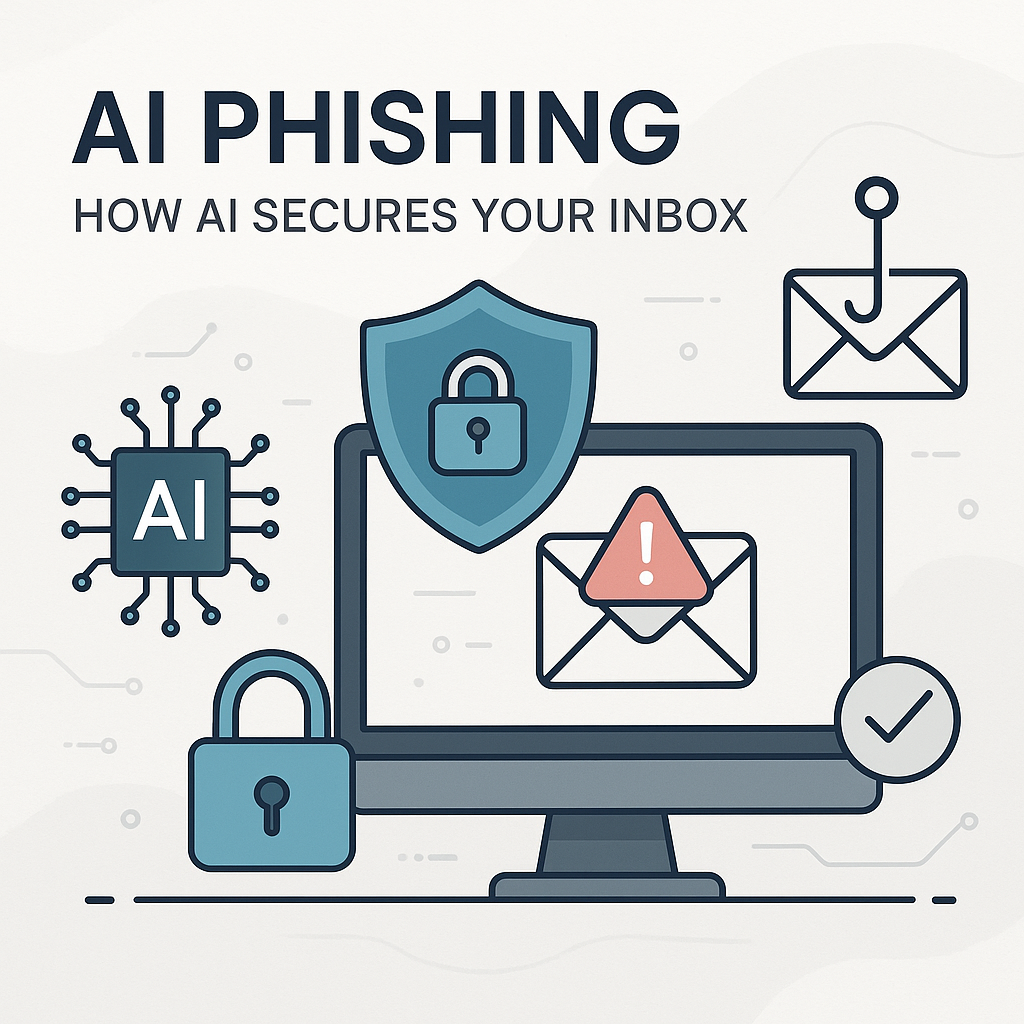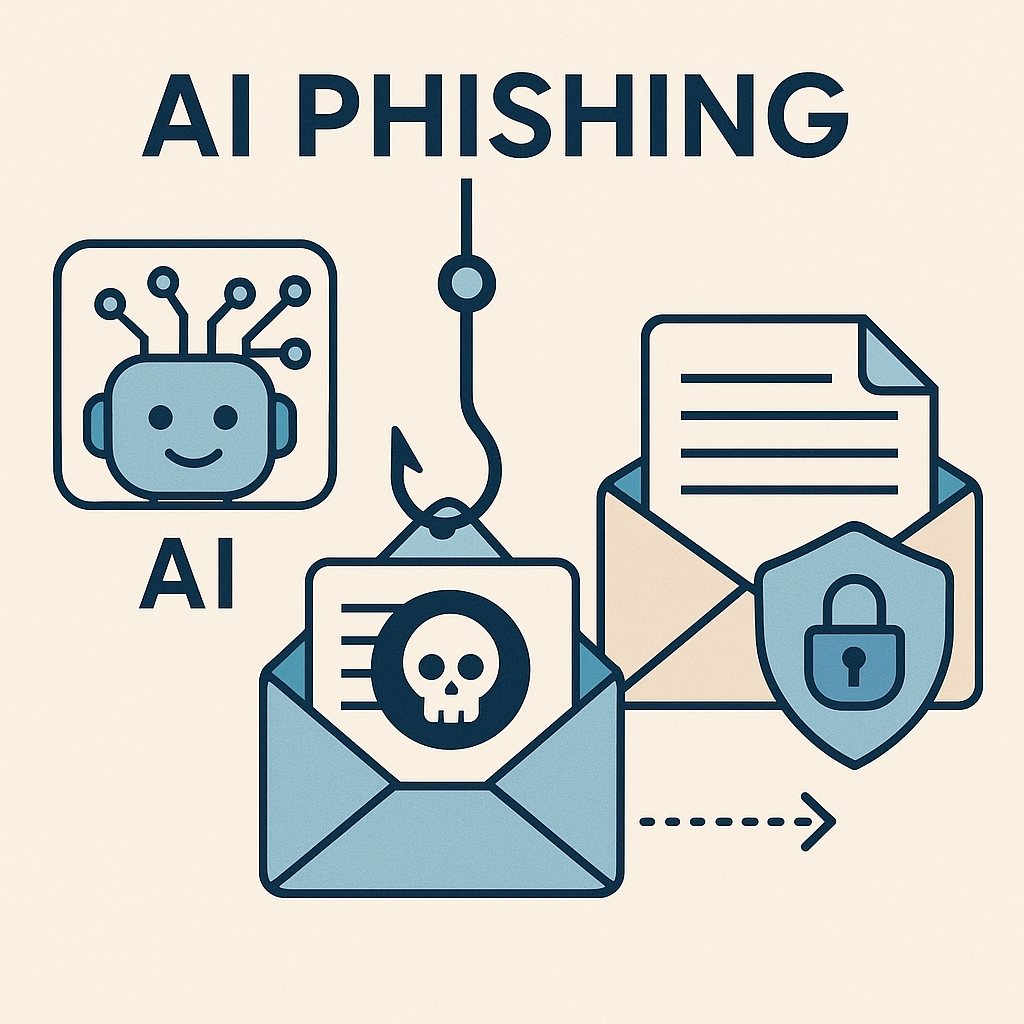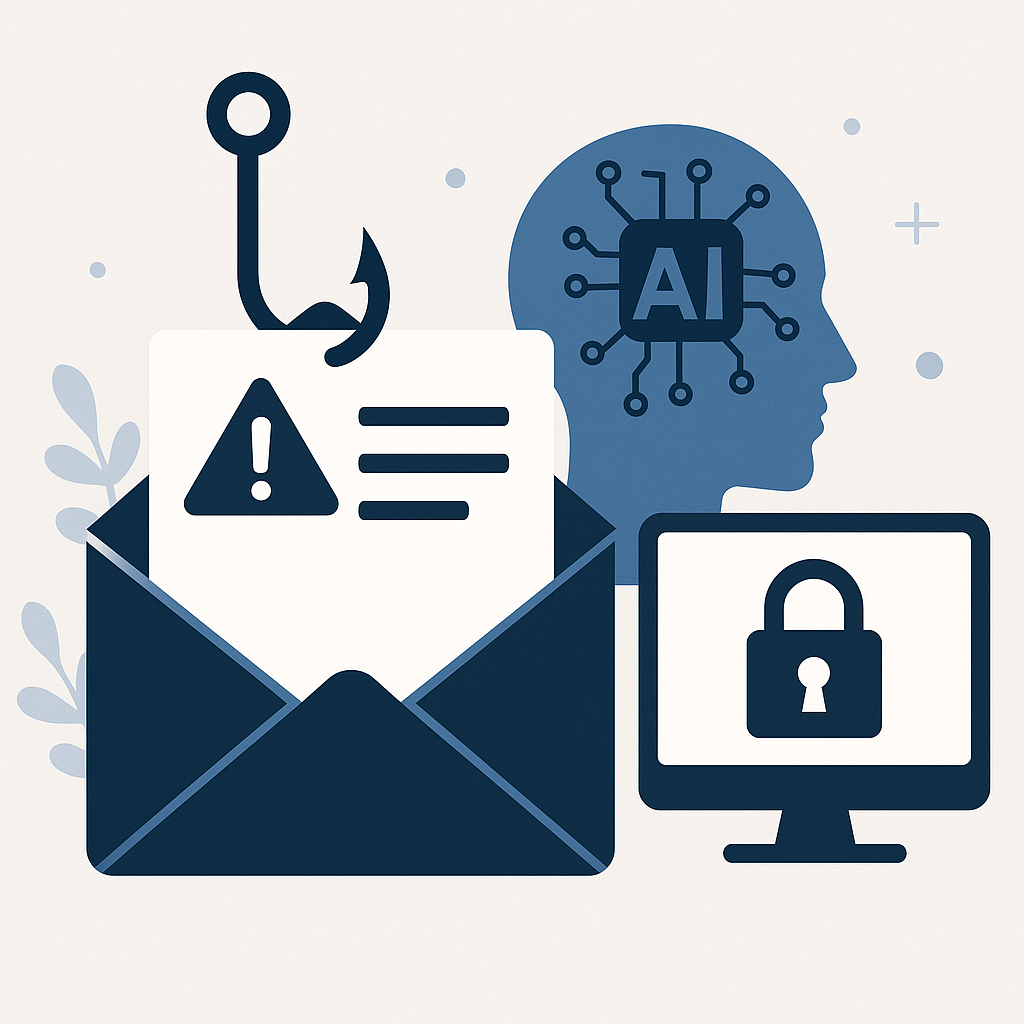AI Phishing: How AI Secures Your Inbox

The digital landscape is in constant flux, and few areas face as rapid an evolution as email security. For years, the specter of phishing has loomed large, casting a shadow over inboxes worldwide. But a new, more formidable adversary has emerged: ai phishing. Cybercriminals are no longer relying on simple, error-ridden emails. Instead, they're wielding the power of Artificial Intelligence to craft sophisticated, hyper-personalized attacks that can bypass traditional defenses and ensnare even the savviest users. This presents a significant challenge for businesses, threatening sensitive data and crucial operations. Yet, in a classic case of technological arms race, the very AI that powers these attacks is also becoming our most potent weapon against them. This article delves into the escalating threat of AI phishing and, more importantly, explores how leveraging AI is the key to securing your inbox, protecting vital business data, and even boosting your overall productivity.
Understanding the Rise of AI Phishing Attacks
AI phishing represents a significant leap forward in cyberattack sophistication. Gone are the days when phishing emails were easily identifiable by their poor grammar and generic greetings. Attackers are now using AI tools to generate highly convincing, contextually relevant messages that mimic legitimate communications with uncanny accuracy. This rise is fueled by the increasing accessibility of powerful AI language models, which can be trained to imitate specific writing styles, adopt particular tones, and even reference details scraped from public profiles or previous data breaches.
Statistics paint a stark picture: reports indicate a surge in AI-generated phishing content, with some analyses suggesting that up to 90% of cyberattacks could involve AI in the near future. This isn't just about mass phishing campaigns; AI enables highly targeted "spear-phishing" and "whaling" attacks, making them incredibly difficult to detect. The primary goal remains the same: to trick recipients into revealing sensitive information, such as login credentials, financial details, or personal data, leading to credential harvesting. As noted by experts, "AI is making phishing attacks more personalized and convincing than ever before, creating a significant challenge for traditional security measures." (Source: Wired) The ability to automate the creation of vast numbers of unique, believable phishing emails means attackers can scale their operations dramatically, overwhelming manual detection efforts.
How AI is Being Used to Enhance Phishing
The capabilities of AI in the hands of malicious actors are broad and alarming. One of the most impactful uses is in crafting deceptive content. AI language models can generate emails that sound precisely like they came from a trusted colleague, a known vendor, or even a senior executive. This includes:
- Impersonation: AI can analyze the communication patterns, tone, and vocabulary of specific individuals or organizations to create emails that are virtually indistinguishable from legitimate correspondence. This is particularly effective in Business Email Compromise (BEC) scams, where attackers impersonate executives to authorize fraudulent transactions.
- Contextual Relevance: By processing information from various sources, AI can tailor phishing messages to specific recipients, referencing recent projects, current events, or even personal details to build trust and urgency.
- Evasion of Filters: AI can dynamically adjust its output to bypass signature-based detection and known pattern matching used by many traditional email security systems. For instance, AI can generate slight variations of malicious links or rephrase common phishing phrases to avoid triggering basic filters. As highlighted in reports, "Attackers employ AI to imitate writing style, taking over email threads, and impersonating sender identities at high success rates, evading traditional security defenses such as SPF, DKIM, and DMARC." (Source: DMARC Report) This sophisticated mimicry makes detecting credential harvesting attempts significantly harder.
The Limitations of Traditional Phishing Defenses
For years, businesses have relied on a layered approach to email security, incorporating technologies like spam filters, antivirus software, and email authentication protocols such as SPF, DKIM, and DMARC. While these tools have been effective against earlier generations of threats, they are increasingly struggling to keep pace with AI-powered attacks.
- Signature-Based Detection: These systems rely on known patterns and signatures of malicious content. AI-generated phishing emails, however, are often unique and constantly evolving, making it difficult for signatures to be created and updated quickly enough.
- Rule-Based Filters: While useful for blocking common keywords or suspicious sender patterns, these rules can be easily circumvented by AI that crafts messages with nuanced language and avoids overt red flags.
- Email Authentication (SPF, DKIM, DMARC): These protocols help verify the sender's identity. However, advanced AI techniques can sometimes spoof these records or exploit vulnerabilities, or the attacks may originate from compromised but seemingly legitimate accounts, rendering these checks less effective in isolating AI-driven threats.
The challenge lies in the adaptive nature of AI. As one expert observes, "AI tools can adapt in real-time to evolving phishing tactics and patterns, ensuring that your email security measures remain up-to-date and effective against new threats." (Source: ComputronixUSA) Traditional defenses, often built on static rules or historical data, lack this dynamic capability, leaving a critical gap in phishing detection and overall threat protection.
Leveraging AI for Advanced Phishing Detection
This is where AI truly shines as a defensive tool. Artificial intelligence can be employed to analyze emails in ways that surpass human capabilities and traditional automation. This leads to superior phishing detection and enhanced AI email security.
- Natural Language Processing (NLP): AI uses NLP to understand the context, sentiment, and intent behind email content. It can detect subtle linguistic anomalies, unusual phrasing, or manipulative language that might indicate a phishing attempt, even if the grammar is perfect.
- Behavioral Analysis: AI can learn the typical communication patterns of your organization and its users. It can flag emails that deviate from these norms, such as an unexpected request for urgent fund transfers from a senior executive during off-hours, or an email with an unusual attachment type from a known sender.
- Machine Learning: AI algorithms continuously learn from new data, adapting to emerging threats and refining their detection capabilities. This means that as attackers evolve their tactics, AI security systems can adapt alongside them, providing a more robust and future-proof defense. Dashlane notes, "The strength of our AI phishing model lies in its capability to proactively and dynamically catch threats, both known and unknown, helping enterprises to build phishing resistance." (Source: Dashlane)
By integrating AI into AI email security solutions, businesses gain a powerful ally in the fight against ai phishing. These systems can analyze millions of emails per second, identifying sophisticated threats that would otherwise go unnoticed, thereby enhancing phishing detection and strengthening overall threat protection. This proactive stance is crucial for maintaining business email security. Implementing an effective AI email filter is a prime example of leveraging this technology for immediate benefit.
AI's Role in Protecting Business Credentials and Data
The ultimate goal of phishing, especially credential harvesting, is to gain unauthorized access to sensitive business information. This can include customer databases, financial records, intellectual property, and confidential employee data. A successful breach can lead to devastating consequences:
- Financial Losses: Direct theft of funds, costs associated with recovery, regulatory fines, and lost revenue due to operational disruption.
- Reputational Damage: Loss of customer trust and damage to brand image, which can take years to repair.
- Operational Disruption: Systems taken offline, data inaccessible, and productivity plummeting as IT teams scramble to contain and remediate the breach.
AI-powered threat protection plays a vital role in mitigating these risks. By accurately identifying and quarantining phishing attempts before they reach the user, AI prevents the initial compromise. This is particularly important for safeguarding against credential harvesting tactics that aim to steal login details for critical business systems. Implementing strong business email security measures, bolstered by AI, acts as a critical first line of defense, ensuring that sensitive data remains secure and operations can continue uninterrupted.
Integrating AI Security into Your Email Workflow
Adopting AI for email security isn't just about implementing new software; it's about integrating intelligence into your existing processes to create a more efficient and secure workflow. This involves several key steps:
- AI-Powered Email Gateways: Deploying advanced email security gateways that leverage AI for real-time threat analysis, sandboxing of suspicious attachments, and URL rewriting.
- Endpoint Protection: Ensuring that AI-driven security is also present on user devices to catch any threats that might slip through the gateway.
- User Education: While AI handles the heavy lifting of detection, ongoing user training remains crucial. AI can even help personalize training by identifying common user vulnerabilities or providing real-time feedback on suspicious emails users might encounter.
Integrating these AI capabilities can significantly reduce the burden on IT departments and busy professionals. By automating the detection and blocking of malicious emails, teams can focus on more strategic tasks. This shift transforms email management from a reactive, time-consuming chore into a more proactive, efficient process. For organizations looking to optimize their operations, this approach is a game-changer. Exploring solutions that enhance email workflow optimization is paramount for businesses aiming to stay ahead of threats and boost productivity. This also directly contributes to efforts to reclaim email time and boost productivity and reduce stress.
MailToPie: An AI Solution for Secure and Productive Email
In the quest to manage email effectively and maintain robust security, businesses and professionals often find themselves juggling numerous tasks. The sheer volume of communication, coupled with the ever-present threat landscape, demands intelligent solutions. For professionals and businesses looking to manage their inbox efficiently while bolstering security, advanced tools are key. Think about how tools that act as AI agents can revolutionize your email productivity by automating tasks and providing insights. Similarly, consider integrating a powerful ai executive assistant into your operations. Platforms like MailToPie offer sophisticated features designed to streamline communications, enhance organization, and ultimately, protect your digital assets from evolving threats.
By leveraging AI, tools like MailToPie can help filter out noise, prioritize important messages, and even automate responses or follow-ups, contributing to improved email management AI. This not only frees up valuable time but also ensures that critical communications are handled promptly and securely. When AI is applied to both security and productivity, it creates a synergy that empowers users, reduces the risk of human error in handling sensitive information, and ensures that your inbox becomes a tool for growth rather than a source of stress and vulnerability. This focus on enhancing AI productivity tools is essential for modern professionals and IT departments alike.
Future Trends in AI for Email Security
The evolution of AI in cybersecurity is a continuous journey. Looking ahead, we can anticipate several exciting trends that will further strengthen our defenses against ai phishing:
- Predictive Analytics: AI will become even more adept at predicting potential threats based on subtle indicators and historical data, allowing for preemptive action.
- AI-Driven Threat Hunting: AI systems will proactively search for anomalies and potential breaches within networks and email systems, rather than just reacting to known threats.
- Hyper-Personalized Defense: AI will tailor security measures not just to the organization, but to individual user behaviors and risk profiles, creating a truly bespoke security experience.
- Advanced Spoofing Countermeasures: As AI attackers get better at impersonation, AI defenders will develop more sophisticated methods to verify sender authenticity and detect deepfakes or highly convincing AI-generated text.
The ongoing advancement in cybersecurity AI promises a future where email remains a vital communication channel, but one that is significantly more secure and efficient. The continuous development of AI email security solutions will be critical in staying one step ahead of evolving threats and ensuring comprehensive threat protection for all. As mentioned by CMIT Solutions, "The key to successful automated phishing prevention lies in integrating AI-powered tools with your existing cybersecurity infrastructure. This creates a multi-layered defense system where AI-enhanced capabilities can adapt in real-time to evolving phishing tactics and patterns." (Source: CMIT Solutions)
Conclusion
The rise of ai phishing marks a new era in cyber threats, demanding a fundamental shift in how we approach email security. Traditional defenses, while still valuable, are no longer sufficient against the sophisticated, AI-powered attacks that can mimic legitimate communication with alarming accuracy. The good news is that AI itself is the most powerful solution available to combat these advanced threats. By leveraging AI for advanced phishing detection, real-time threat protection, and intelligent email management AI, businesses can build a robust defense against credential harvesting and safeguard their sensitive data. Embracing these technologies not only enhances security but also drives AI productivity tools that streamline workflows and free up valuable time for professionals and IT departments. As the digital battleground continues to evolve, adopting AI-driven security strategies is no longer optional – it's essential for survival and success in the modern business world. Take proactive steps today to secure your inbox and empower your organization against the future of cyber threats.
```


